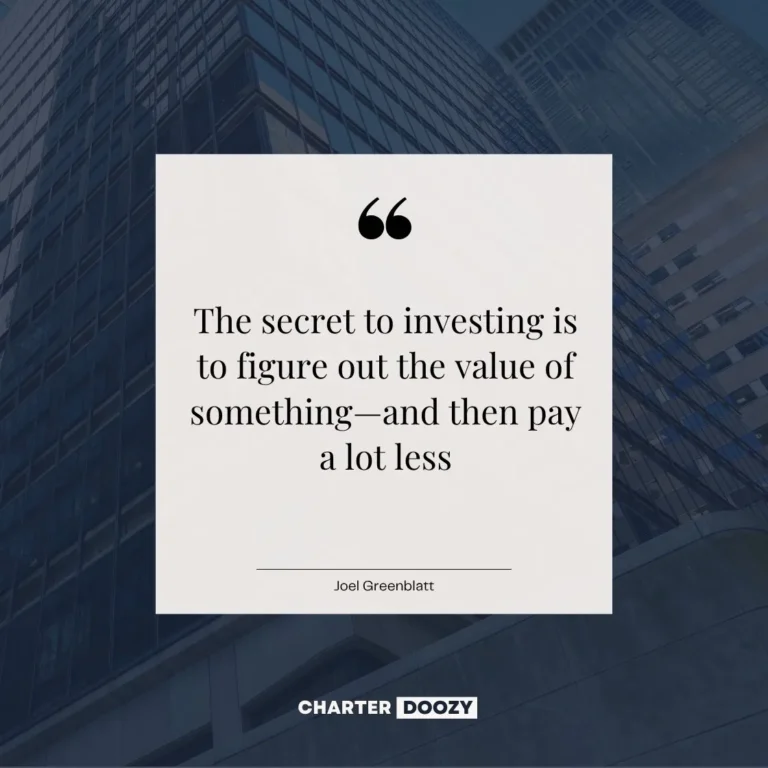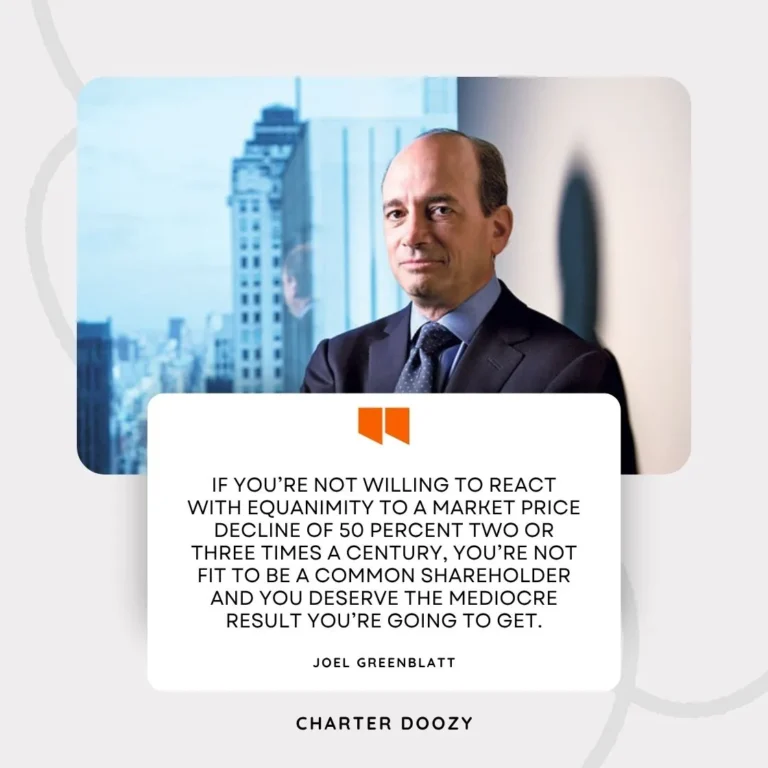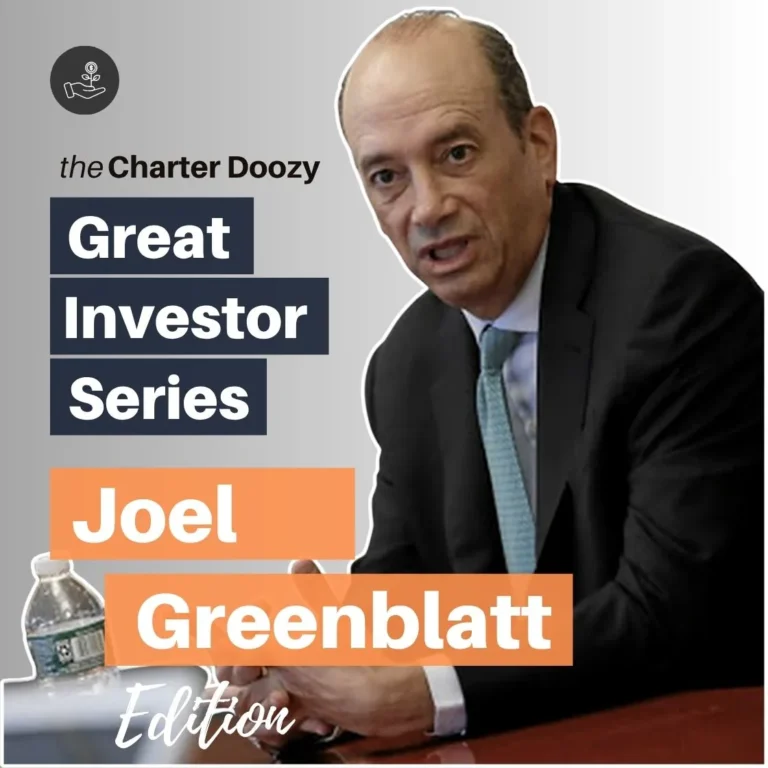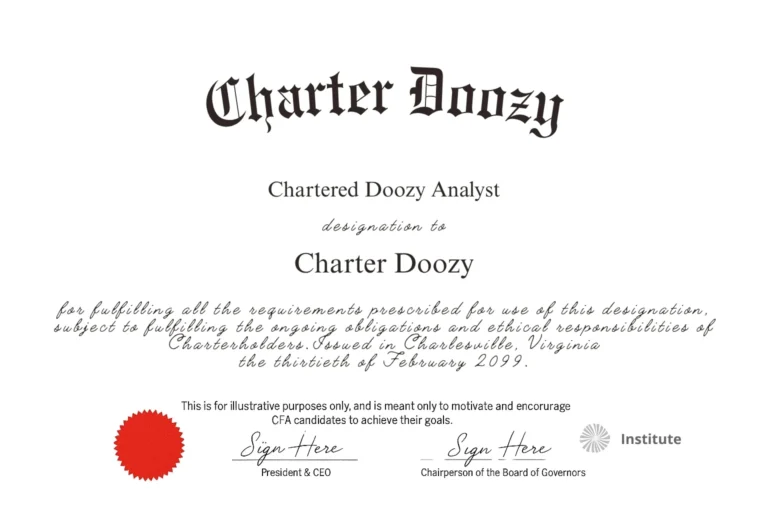⭐ Joel Greenblatt – Quick Facts
The Professor Who Outsmarted Wall Street
In the early 2000s, Joel Greenblatt stood in front of an auditorium filled with MBAs and quipped, “I’m about to show you how to beat the market. It’s so simple that a sixth grader could do it.” He proceeded to outline an investing strategy so effective and so embarrassingly straightforward that it defied everything Wall Street stood for. The audience chuckled politely, as finance people do when someone suggests you can “beat the market” without supercomputers, satellite data, or insider access. But the joke was on them. Greenblatt’s Magic Formula would not only become the core of a best-selling book but would inspire a wave of quant-inspired value investing strategies, reshaping how professionals and amateurs alike think about systematically exploiting market inefficiencies.
Greenblatt is a rare breed: part brilliant hedge fund manager, part patient teacher, and part investing humorist. His blend of deep fundamental knowledge, quantitative rigor, and a willingness to share his secrets makes him one of the most fascinating (and relevant) figures for CFA candidates and investment professionals today.

Want to think like the world’s best investors?
Dive into the mindsets, philosophies, and powerful quotes from legends like Soros, Fisher, Dalio, and more. Learn timeless strategies that turn insight into wealth – and transform how you see the markets.
A Wall Street Maverick with a Chalkboard
Born in 1957 in New York, Joel Greenblatt earned his BA and MBA from the Wharton School at the University of Pennsylvania. He founded Gotham Capital in 1985 with seed money from legendary investor Michael Milken and promptly went on to post one of the most spectacular track records in hedge fund history—reportedly achieving annualized returns of over 40% from 1985 to 1994.
Greenblatt’s style is rooted in value investing but with a unique quantitative twist. He can analyze complex spin-offs, merger arbitrage opportunities, and distressed situations with surgical precision—yet he’s equally happy reducing investing concepts to plain English for a lay audience. This dual identity as both market practitioner and educator earned him the affectionate nickname “The Professor” among fans and students.
He is also the author of several influential books, including You Can Be a Stock Market Genius and The Little Book That Beats the Market, the latter of which introduced his famous Magic Formula—a systematic method for buying good companies at bargain prices.

The Core Philosophy: Cheap and Good
At the heart of Joel Greenblatt’s philosophy lies a deceptively simple thesis: buying above-average companies at below-average prices leads to superior long-term returns. While that may sound like basic value investing orthodoxy, Greenblatt’s genius was in quantifying what “cheap” and “good” mean—and building a systematic way to find such stocks.
His approach is grounded in two key metrics:
- Earnings Yield (EBIT/Enterprise Value): A measure of how cheap a business is relative to its cash-generating power. Enterprise value adjusts for debt, making it more robust than price alone.
- Return on Capital (EBIT / (Net Working Capital + Net Fixed Assets)): A proxy for business quality, revealing how efficiently a company turns invested capital into operating income.
Greenblatt ranks all stocks on these two metrics and then combines the rankings to identify companies that score well on both. This method—the Magic Formula—seeks businesses that are both highly profitable and attractively priced.
Underneath the simplicity lies a deep respect for the behavioral biases that cause mispricings. Greenblatt is fond of reminding audiences that the Magic Formula works not because it’s magic but because most investors can’t stomach underperformance over shorter periods. As he notes, “Value investing is simple but not easy.”
Beyond the Magic Formula, Greenblatt remains a master of special situations—spin-offs, restructurings, mergers, and other corporate events that create mispricing due to temporary dislocation or forced selling. In You Can Be a Stock Market Genius, he details how these “off-the-radar” opportunities often yield superior risk-reward profiles.
The Genius Behind the Curtain
One of Greenblatt’s best-known coups involved American Express in the early 1990s. Following the 1987 crash and subsequent challenges, American Express traded at roughly 12 times earnings—a historically low valuation for a dominant brand with high return on equity. Greenblatt built a significant position. When sentiment shifted and the market recognized the value of the franchise, the stock tripled over the next few years.
Even more legendary are his adventures in spin-offs. In You Can Be a Stock Market Genius, Greenblatt recounts how spin-offs like Marriott International’s split into two entities created hidden value. Investors dumped shares in the newly spun-off companies because they were small, illiquid, or non-core holdings, but Greenblatt saw opportunities where others saw garbage. These spin-off plays often delivered triple-digit returns as the new businesses found their investor base and their true value emerged.
A striking CFA curriculum connection emerges here. Greenblatt’s focus on spin-offs and corporate events aligns perfectly with topics like Equity Valuation, Corporate Finance (particularly restructurings), and Behavioral Finance. Spin-offs often create opportunities because of non-economic selling—investors forced to sell new shares they don’t want or can’t hold. For CFA candidates, Greenblatt’s work is a real-world application of how market inefficiencies can arise from investor constraints and psychological biases.
His career also offers a vital lesson in risk management. Despite his willingness to concentrate bets, Greenblatt always anchored his positions in solid fundamental analysis and paid careful attention to downside risk. His blend of deep dives and quantitative screens exemplifies the CFA curriculum’s balance between qualitative assessment and systematic approaches.

Lessons for CFA Candidates and Professionals
Joel Greenblatt’s journey offers a masterclass in practical investing wisdom highly relevant for CFA candidates and professionals alike.
First, his work underscores the enduring power of quantitative screening combined with fundamental analysis. The CFA curriculum teaches that valuation ratios alone are insufficient—they must be placed in context. Greenblatt’s Magic Formula embodies this principle by combining value (earnings yield) with quality (return on capital).
Second, Greenblatt’s success in special situations illustrates the importance of seeking niches where fewer analysts are looking. The CFA Program emphasizes market efficiency, but Greenblatt’s career demonstrates that even in well-traveled markets, pockets of inefficiency exist—particularly around corporate events, small caps, or complex restructurings.
Third, Greenblatt is a living case study in behavioral finance. He often notes that sticking with the Magic Formula is psychologically hard because it underperforms at times. Investors abandon systematic strategies just when they should be staying the course. For CFA candidates, this is a vivid reminder that knowledge alone is not enough; temperament and discipline are critical.
Fourth, Greenblatt’s teaching style is a model for communicating complex ideas simply. Whether in books or lectures, he translates sophisticated investing concepts into language accessible to both professionals and beginners. CFA candidates should take note: the ability to explain your analysis clearly is as vital as the analysis itself.
Finally, Greenblatt’s humility and curiosity are inspiring. Despite his hedge fund success, he continues to refine his methods, teach students, and share insights. His career proves that even the best investors remain perpetual students of the market.
Debates and Criticisms
While Greenblatt’s results have been extraordinary, his Magic Formula has not been immune to criticism. Skeptics argue that widespread publication of the formula has reduced its effectiveness. As with many systematic strategies, once the crowd piles in, excess returns tend to dissipate.
Moreover, in the decade following the Global Financial Crisis, traditional value metrics underperformed growth, leading some to question whether Greenblatt’s metrics were sufficient to capture modern business dynamics, especially intangible-heavy businesses like software and platforms. High-return businesses with low tangible assets often look expensive on Greenblatt’s metrics, causing the Magic Formula to miss significant growth winners.
Yet Greenblatt himself acknowledges these limitations. In interviews, he’s noted that the Magic Formula is best seen as a starting point for further analysis rather than an automatic buy list. His more recent work at Gotham Asset Management involves sophisticated factor models designed to account for a wider range of valuation and quality metrics, including adjustments for intangibles.
Ultimately, the debate centers around whether simple quantitative rules can continue to generate alpha in an increasingly efficient market. Greenblatt’s answer is that human behavior remains the last great inefficiency—and systematic discipline still offers an edge for those who can stick to it.
Further Reading and Resources
For those seeking to delve deeper into Joel Greenblatt’s methods and philosophy, several excellent resources await:
- You Can Be a Stock Market Genius by Joel Greenblatt. A must-read for anyone interested in special situations and event-driven investing.
- The Little Book That Beats the Market and The Little Book That Still Beats the Market. Greenblatt’s accessible explanations of the Magic Formula.
- Joel Greenblatt’s guest lectures at Columbia Business School, available on YouTube and various investing forums.
- Interviews on podcasts like Masters in Business with Barry Ritholtz, where Greenblatt discusses markets, behavioral finance, and factor investing.
- Gotham Asset Management’s publications and research updates for insights into how Greenblatt’s thinking has evolved in recent years.
- CFA Institute materials, especially on quantitative methods, equity valuation, and behavioral finance—all integral to understanding Greenblatt’s approach.
Keep Learning and Keep It Simple
Joel Greenblatt’s career reminds us that the path to market-beating returns doesn’t have to be obscured by complexity. It requires curiosity, discipline, and the courage to stick with strategies through inevitable rough patches. His message is as relevant to CFA candidates as it is to veteran portfolio managers: simple ideas, rigorously executed, often outperform sophisticated theories.
So as you continue your CFA journey, remember Greenblatt’s advice: “Investing is simple, but not easy.” Keep learning, keep refining your methods, and above all, maintain the humility to know that markets always have more to teach us. In the end, the magic isn’t in the formula—it’s in your discipline to follow it.

